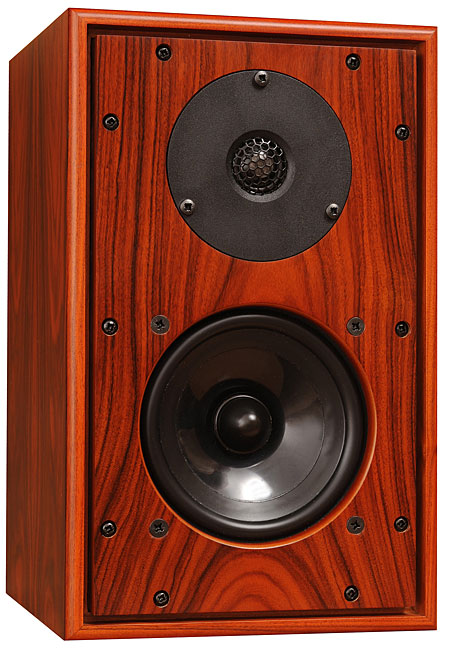| Columns Retired Columns & Blogs |
Might the apparently upgraded P3ESR-XD merit remeasuring of its off-axis response?
https://harbeth.co.uk/p3esr-xd-loudspeaker/

Ultimately, of course, and provided that you a) have very deep pockets and b) are prepared to reach to the very bottom of those pockets, you can have everything. But each of us who lives in the real world of car payments, mortgages, and college-age children must decide what is most important to us. You can't, therefore, say that real-world speakers with more extended lows are inherently better than those that excel at soundstaging, or that both are inferior to those with zero midrange coloration. All that can be said is that one of those choices will fit your needs better than it fits others' needs. That's why so many companies offer so many different speaker models at so many prices.
Which brings me to Harbeth's P3ESR. At just 12" tall, this is not a speaker that will succeed at playing pipe-organ recordings. And with a single woofer just 5" in diameter, it's not going to play super-loud or fill large rooms with sound. But because the earlier versions of this sealed-box, two-way minimonitor excelled at reproducing the all-important midrange, and were champs at re-creating a believable soundstage, I have patiently awaited review samples ever since I auditioned an early prototype at the 2009 Consumer Electronics Show.
The original HL-P3 was designed by Harbeth's Alan Shaw to replace the venerable BBC LS3/5A location monitor, of which Harbeth had been a licensee. (For the full history of this classic design, click here.) I reviewed the HL-P3 in December 1993; John Marks enthused over the ES-2 version in the October 2005 installment of his column, "The Fifth Element," and I followed with a full review in April 2007. (You can find all this coverage, which includes the full backgrounds of both the design and Harbeth Audio Ltd., starting here.)
The fundamental design of the P3ESR remains unchanged from its predecessor: a 0.75" (19mm) ferrofluid-cooled aluminum-dome tweeter, protected by a mesh screen (in this version, black instead of gold), is coupled to a 5" plastic-cone woofer, mounted on the front baffle from behind. The baffle is veneered, and the cutout for the woofer has radiused edges. The woofer (made in the UK according to its label) is constructed on a diecast chassis, and at the end of its pole-piece has a half-roll rubber surround and a moving dustcap rather than the currently fashionable stationary phase plug. The crossover is complex, with five inductors, ten capacitors, and three resistors.
The new speaker has a single pair of gold-plated terminal posts on its rear panel, compared with the earlier version's two pairs, for biwiring. The most important change is the use of Harbeth's proprietary and patented Radial2 material for the woofer cone. Used by Harbeth in its more expensive designs, Radial2 is said to be a thermally stable, low-mass, low–energy-storage composite polymer that offers more clarity and better low-level resolution than polypropylene.
The 1993 version of the 'P3 sold for $1199/pair; in 2007, 14 years of inflation later, the price of the 'P3ES-2 was $1850–$2150/pair. Now, in 2010, the P3ESR costs $2195–$2395/pair, depending on the finish chosen. This might be thought expensive for a minimonitor, but I don't think it unreasonable for such a beautifully finished, high-performance speaker manufactured in a high-wage country. As Michael Fremer's mother used to say, "You pay, you get."
Listening
I set up the P3ESRs on 24"-tall Celestion stands, the latters' center pillars filled with dry sand and bird shot. The speakers were toed-in to the listening position and placed well away from room boundaries, and I did quite a lot of experimenting with position to get the transition from the upper bass through the midrange balanced as smoothly as possible. Harbeth recommends that the P3ESR be used with its grille in place. This consists of black cloth stretched over a thin metal frame that fits into a rectangular slot around the edge of the front baffle. With the grille in place, there is thus no additional acoustic obstruction anywhere near the drive-units. However, I felt the balance was a little too smooth with the grilles, and did most of my listening without them.
The three speakers that preceded the little Harbeths in my listening room were all large, expensive, full-range floorstanders: the Revel Ultima Salon2 ($22,000/pair, reviewed in June 2008), the Aerial Acoustics 20T V2 ($32,000/pair, reviewed in November 2009), and the Focal Maestro Utopia ($49,995/pair, reviewed in July 2010). When I began my auditioning of the P3ESRs, I expected to be made well aware of what I was giving up in quantity of sound.
Well, yes. Low bass was missing in action, as was most of the midbass. Listening to the low-frequency warble tones on Editor's Choice (CD, Stereophile STPH016-2), there was useful bass output down to the 63Hz band, but not much of anything below that. And the speakers were obviously compressing the sound when I asked them to go louder than about 100dB. But having said that, what surprised me about the little Harbeths was how little I missed what the big speakers had been giving me.
Of course, the adage that your choice of loudspeaker dictates your choice of music still applies. What you tend to choose from your collection to play through a specific speaker will be those recordings that bring out that speaker's best and hide its shortcomings.

I would also be very curious to see how the XD update has affected measured and subjective performance (especially measured).